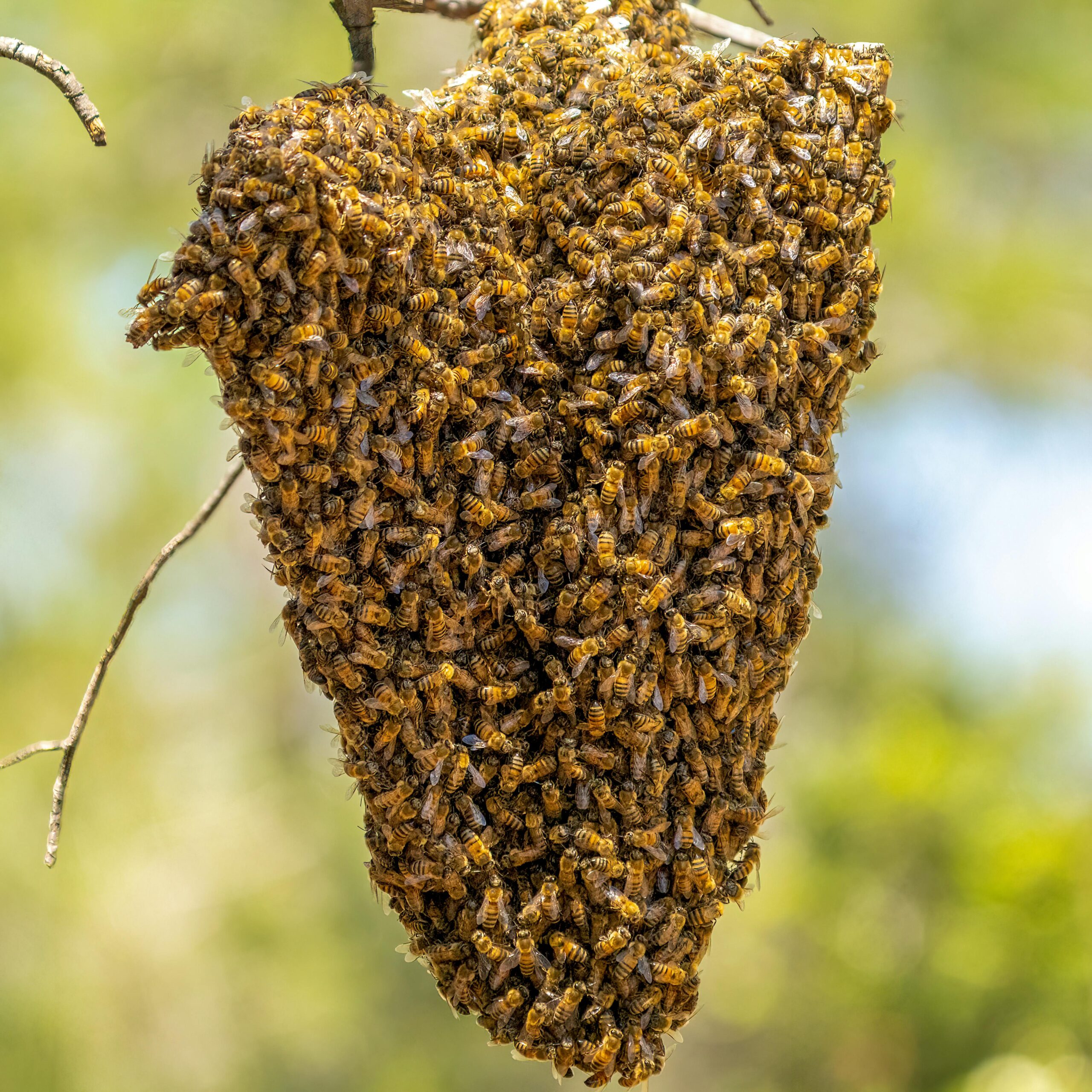One of the most frustrating things in beekeeping is watching half of your strongest colony leave. You’ve nurtured them all year, made it through winter, and now just as the hive is hitting its stride, they decide to take off. Swarming is a natural part of colony reproduction, but as a beekeeper, it’s something I actively try to prevent, especially in strong, overwintered colonies with good genetics.
If your goal is to keep bees productive and in your apiary, swarm prevention should be part of your early-season strategy.
Why Bees Swarm
Swarming is how bees reproduce at the colony level. When a hive becomes congested and environmental cues align, the bees begin raising a new queen. Once those queen cells are capped, the original queen will leave with a large portion of the workforce to establish a new colony elsewhere.
One of the primary triggers for swarming is chemical. When brood space runs out, brood pheromone levels begin to drop. That reduction, combined with increasing stores of nectar and pollen, creates a chemical signal inside the hive that says it’s time to reproduce. Once that signal is strong enough, it is incredibly difficult to reverse. Sometimes, at that point, your best option is to manage the outcome rather than try and stop the process.
How I Watch for Swarming Behavior
I try to stay ahead of the problem, but here are a few things I keep an eye on in my own yard during swarm season:
- A brood nest that’s packed tight with little room left for the queen to lay eggs
- Nectar or pollen showing up in the middle of the brood area
- Queen cups starting to appear on the bottoms of frames (some with eggs inside)
As for queen cups, I usually leave them alone. It helps me identify where to look if the bees start to raise a queen for real. Some beekeepers don’t like them and feel uneasy just seeing one. If that’s you, go ahead and pinch them out, but don’t be surprised when they rebuild them the next week.
What I Do to Prevent Swarming
Over the years I’ve settled into a few strategies that consistently help reduce swarming in my colonies.
Make Room Before They Need It
This is one of the simplest and most effective things you can do. Add supers (another word for honey boxes) early. Open up the brood nest by adding additional brood boxes if needed. Do something to give them space before they start filling every available cell. Once you see nectar in the brood nest, it means they have nowhere else to put it, and that’s one of the earliest and most important warning signs.
Split or Simulate a Split
If the hive is building up rapidly and you’re seeing queen cups with royal jelly and larvae inside, it may be time to split. If you don’t want to reduce your total colony count, you can simulate a split by moving the queen and a few frames of bees out to another hive, or by using a technique like the Demaree method. This lets you separate the queen from the brood nest while keeping the colony intact. A lot of beekeepers find this to be very effective at interrupting the swarm impulse without sacrificing honey production.
Monitor Queen Cell Development
Once queen cups contain royal jelly and larvae, the colony is actively raising a new queen. I do not wait for cells to be capped. If the hive is strong and resources are abundant, it only takes a few days for things to escalate. When I find a lot of developing queen cells, I either split the colony or rearrange frames to reduce pressure and make them feel less crowded. The key is timing. Once they commit to swarming, the window for intervention is short.
Equalize Populations and Put Extras to Use
Sometimes I’ll take a frame or two of brood from a booming colony and drop it into a weaker one to reduce pressure. This isn’t something I recommend doing often, because I’d rather let weak genetics die out. But if I’m just trying to keep one hive from tipping over into swarming, it can help in the short term.
If you have multiple strong colonies and find yourself with extra brood, consider building a queenless cell builder using frames from several hives. That gives you the ability to raise new queens without sacrificing too much from any single colony. You can also take the extra frames and start a few nucs. Spare nucs are incredibly helpful as brood donors or as emergency backups when a production queen fails later in the season.
Don’t Wait Too Long
Everything in swarm prevention comes down to timing. Once the bees start capping queen cells, they are nearly ready to go. It doesn’t take much than a warm afternoon, a few hours of calm weather, and they’re airborne. I inspect every 7 to 10 days during swarm season, especially in strong overwintered hives. Anything longer than that and you’re flying blind.
Final Thoughts
Swarming might be natural, but that doesn’t mean you need to let it happen unchecked. If you’ve done the work to build up a strong, productive hive, don’t lose half of it by missing a few warning signs. Swarm prevention is about management. With good timing, a few reliable strategies, and consistent inspection habits, you can keep your bees where they belong and your season on track.
For an effective technique to prevent swarming, many beekeepers use the Demaree method. You can read more about how it works here: The Demaree Method
Want More Beekeeping Info?
Watch on YouTube
https://youtube.com/@beekeepingfornewbees
Join the Discord Community
https://discord.gg/XzkqFKrjMJ
Visit the Beekeeping For Newbees Website
https://beekeepingfornewbees.com
